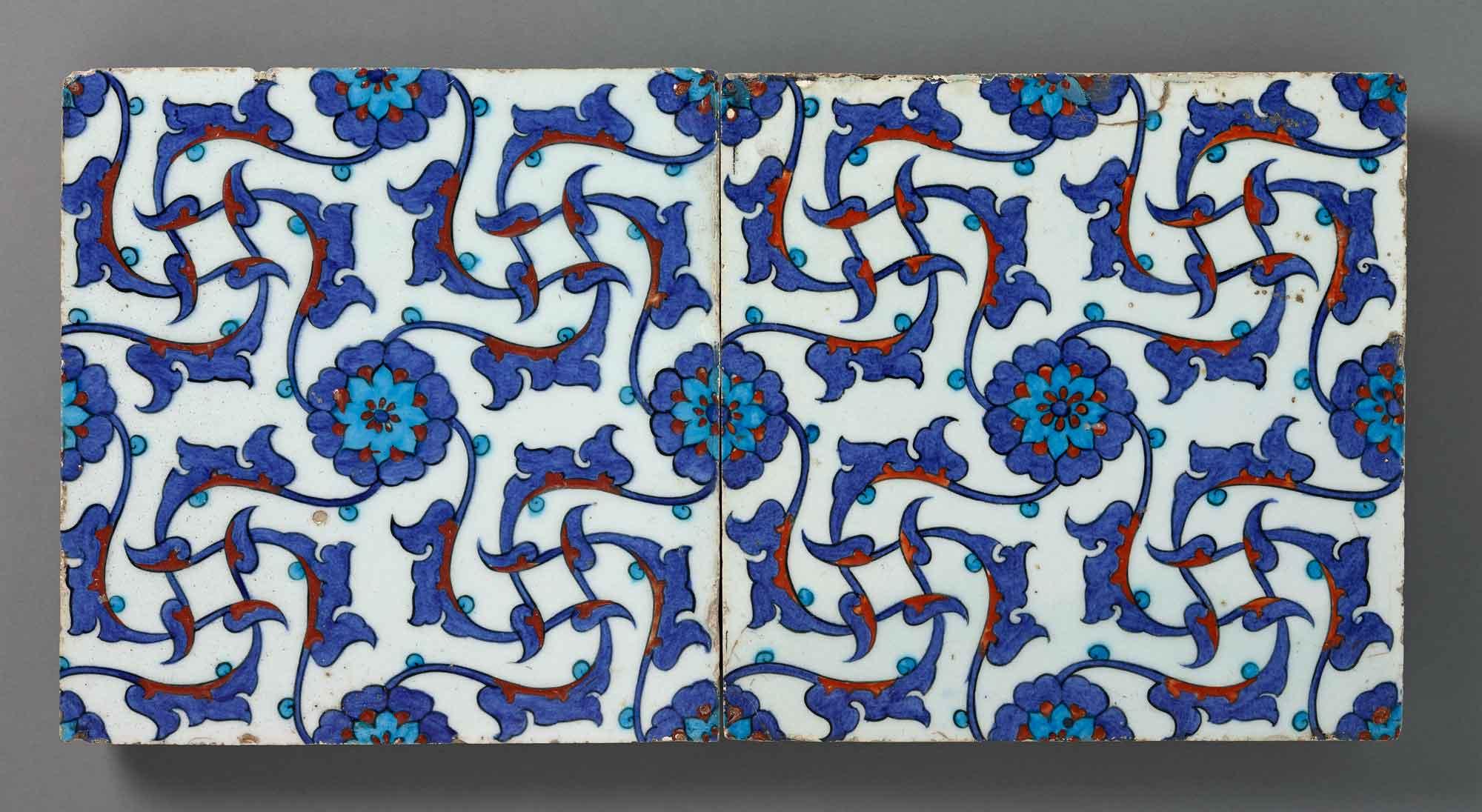Click on the image to zoom
Tiles
- Accession Number:AKM583 and AKM584
- Place:Iznik, Turkey
- Dimensions:Each 25 x 24.5 cm
- Date:1560
- Materials and Technique:Fritware, underglaze-painted
By the sixteenth century, mosques and palaces built under the Ottomans (1299–1923) had predominantly plain ashlar exteriors with a profusion of colours and patterns on the interior in the form of glazed tiles, carpets and textiles, painted ceilings, and monumental inscriptions. These tiles are part of a repeat-pattern composition, an example of which adorns the walls of the sixteenth-century Rüstem Pasha Mosque in Istanbul. Typical of tiles with repeat patterns, the underglaze-painted design would have been applied to the tile through the use of a stencil. The design itself is highly complex. It is an exquisite example of a floral spray around a central motif demonstrating the folding, rotation, and repetition of patterns that characterize Islamic art. The colours are also representative of the Ottoman taste with combinations of turquoise, cobalt-blue, white, and red.
Note: This online resource is reviewed and updated on an ongoing basis. We are committed to improving this information and will revise and update knowledge about this object as it becomes available.


